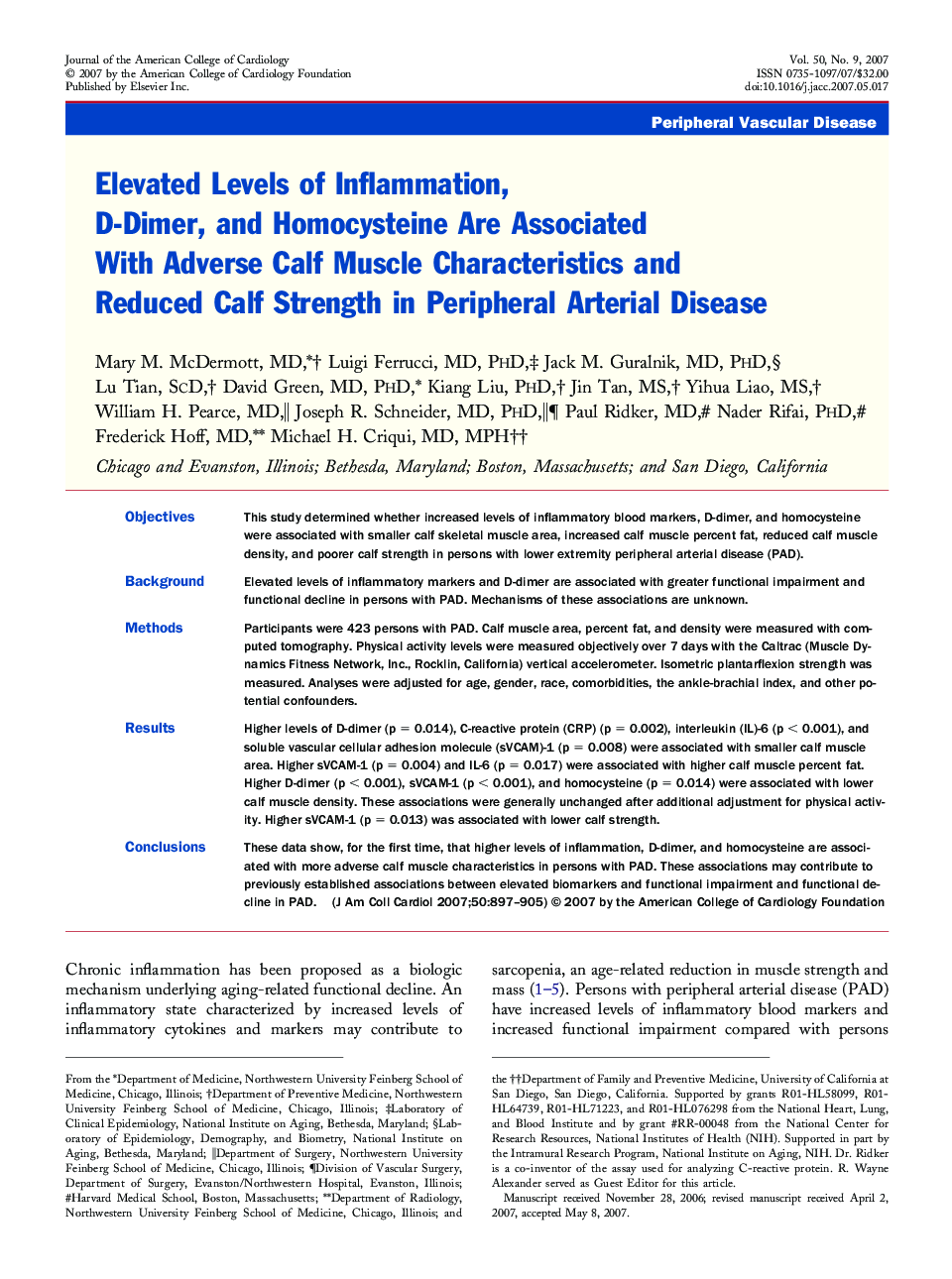| Article ID | Journal | Published Year | Pages | File Type |
|---|---|---|---|---|
| 2951048 | Journal of the American College of Cardiology | 2007 | 9 Pages |
ObjectivesThis study determined whether increased levels of inflammatory blood markers, D-dimer, and homocysteine were associated with smaller calf skeletal muscle area, increased calf muscle percent fat, reduced calf muscle density, and poorer calf strength in persons with lower extremity peripheral arterial disease (PAD).BackgroundElevated levels of inflammatory markers and D-dimer are associated with greater functional impairment and functional decline in persons with PAD. Mechanisms of these associations are unknown.MethodsParticipants were 423 persons with PAD. Calf muscle area, percent fat, and density were measured with computed tomography. Physical activity levels were measured objectively over 7 days with the Caltrac (Muscle Dynamics Fitness Network, Inc., Rocklin, California) vertical accelerometer. Isometric plantarflexion strength was measured. Analyses were adjusted for age, gender, race, comorbidities, the ankle-brachial index, and other potential confounders.ResultsHigher levels of D-dimer (p = 0.014), C-reactive protein (CRP) (p = 0.002), interleukin (IL)-6 (p < 0.001), and soluble vascular cellular adhesion molecule (sVCAM)-1 (p = 0.008) were associated with smaller calf muscle area. Higher sVCAM-1 (p = 0.004) and IL-6 (p = 0.017) were associated with higher calf muscle percent fat. Higher D-dimer (p < 0.001), sVCAM-1 (p < 0.001), and homocysteine (p = 0.014) were associated with lower calf muscle density. These associations were generally unchanged after additional adjustment for physical activity. Higher sVCAM-1 (p = 0.013) was associated with lower calf strength.ConclusionsThese data show, for the first time, that higher levels of inflammation, D-dimer, and homocysteine are associated with more adverse calf muscle characteristics in persons with PAD. These associations may contribute to previously established associations between elevated biomarkers and functional impairment and functional decline in PAD.
